Overview of Fall Webworm

Fall webworm, Hyphantria cunea, is a common pest throughout most of the US and southern Canada. This moth belongs to the tiger moth group (Family Erebidae, subfamily Arctiinae) and is a native to North America. It feeds on almost all shade, fruit and deciduous ornamental trees, but some of its preferred hosts include American elm, birch, hickory, and some maples. Tents are particularly common on walnut trees growing in the open or on trees at the edge of the woodland.
The fall webworm is similar to eastern tent caterpillar in that it creates conspicuous silk tents in trees, but differs in that it always places the tent on the end of the branch. It feeds within the nest so the webbing also contains fecal droppings (eastern tent caterpillar makes its tent in branch crotches and comes out to feed). This pest also is most noticeable in mid-summer into fall, whereas eastern tent caterpillar occurs only in spring.
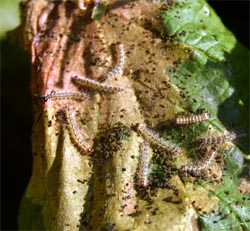
The adult moths are satin white with or without brown wing spots—spotted forms occur in the southern part of its range, while northern types are pure white. They emerge in early spring to summer to lay eggs. Females deposit eggs in hair-covered masses of 200-500 on the underside of leaves. Newly hatched larvae immediately spin a web in which they live in groups. Caterpillars feed on leaves encased in their light grey webs, enlarging their webs to enclose more foliage as they grow, until the last instar when they leave the web and feed individually. They eventually grow to about one inch long. The larvae have either a red or black head.
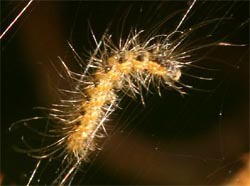
The body is pale green or yellow with a broad dark stripe down the back and yellowish stripes down each side. Long tufts of silky grey hairs emerge from tubercles along the back which are the same color as the head color. Larvae with black heads make flimsy webs, while those with red heads construct a larger, denser web. This insect overwinters as pupae in thin cocoons hidden in the bark of trees, under leaf litter, or in the soil. There is usually only one generation per year in Wisconsin, but in warm years and in other locations there are two generations.
By late July, large unsightly, loosely constructed silken nests begin to appear on branches of roadside or woodland hardwoods. By August and September, the webs may become very large and may even join together. The defoliation and presence of large webs is not attractive, but this damage is generally not significant on healthy, well-established trees. Fall webworms are rarely numerous enough to completely defoliate trees. By the time the leaves are being eaten, trees have already stored enough energy for their survival and growth and control is not essential. Repeated defoliation over several years and other stress (such as drought, recent planting, or construction) can weaken trees. The next spring following defoliation, be sure the tree gets enough water to produce healthy leaves and new growth.

Occasionally, control may be necessary, especially for aesthetic reasons. On small trees, nests can be cut out and destroyed while still small – if the pruning will not affect the shape or health of the tree. Larger webs can be removed by inserting a forked stick or a pole with a nail inserted crosswise to snag the nest and twisting it off (then destroy it). Burning nests on plants is not needed or recommended—this will likely cause more harm than the insects and could pose fire hazards. Also, many municipalities require permits for open burning.
Insecticides may be applied while webs are small and before much foliage has been destroyed. Realize that chemical control may be difficult as the webbing reduces penetration of the pesticide to where the caterpillars are. Sprays must be applied with sufficient pressure to penetrate the silk tent and reach the leaves within.
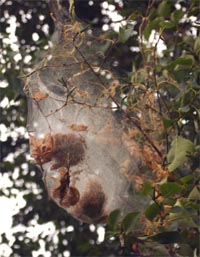
Several pesticides are registered for use against fall webworm. Organic and reduced-impact spray options include insecticidal soap, horticultural oils, the microbial insecticide Bacillus thuringiensis kurstaki (Btk), and spinosad. Conventional insecticide sprays can also be used. Apply this or any other insecticide as directed on the container as soon as the small webs and caterpillars are seen.
The entire infested plant does not need to be treated – just cover the webs and their associated foliage. Insecticides will not remove the webs from the trees, however. In many cases, simply tolerating the presence of the webs is an acceptable course of action.
There are numerous parasitoids and predators of fall webworm which become more abundant when the pests are more numerous, eventually reducing fall webworm populations after a few years. Encourage these beneficial insects by using spot treatments and refraining from unnecessary insecticide use.
– Susan Mahr, University of Wisconsin—Madison
Last Update: PJ Liesch, UW-Entomology, 2025

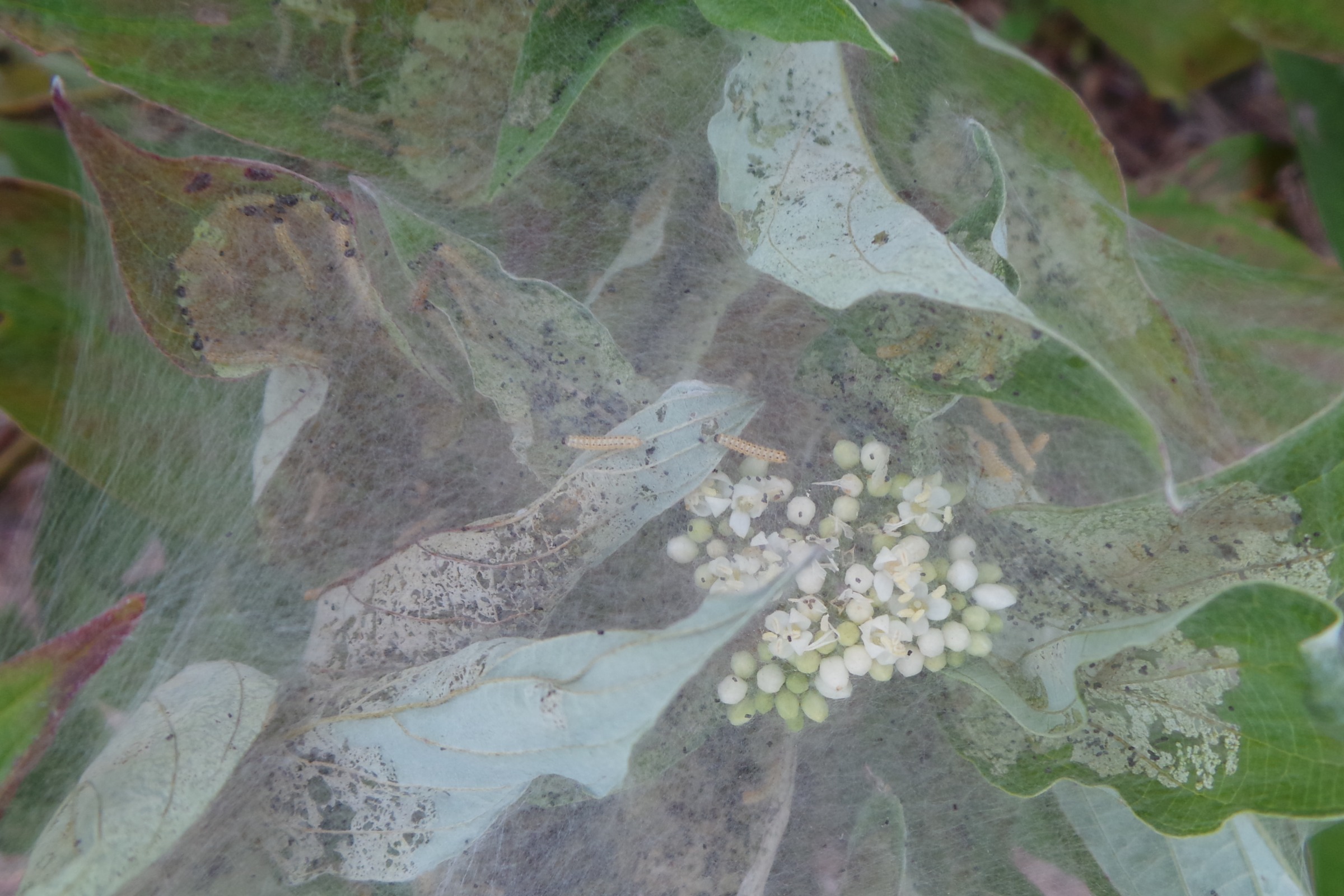




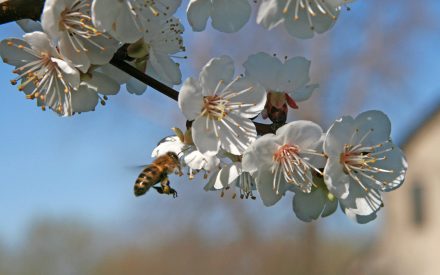 What’s All the Buzz? Woody Plants for Bees, Butterflies, and Other Bee-t-full Pollinators
What’s All the Buzz? Woody Plants for Bees, Butterflies, and Other Bee-t-full Pollinators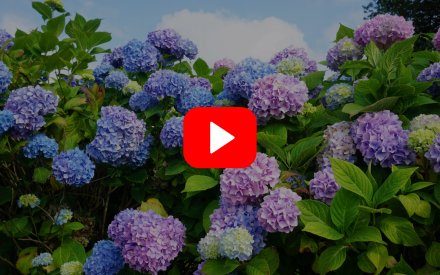 ▶︎ Watch: Hydrangeas: Know Them and Grow Them
▶︎ Watch: Hydrangeas: Know Them and Grow Them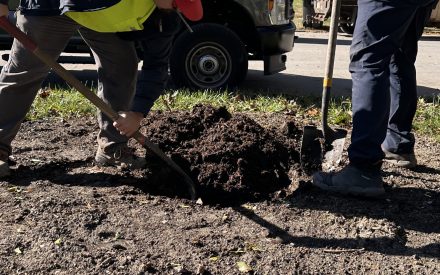 Promoting Urban Forestry: Planting Bareroot Trees in Home Landscapes
Promoting Urban Forestry: Planting Bareroot Trees in Home Landscapes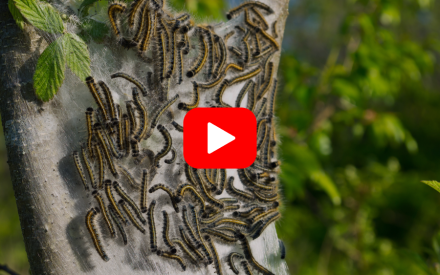 ▶︎ Watch: Torching Tent Caterpillars
▶︎ Watch: Torching Tent Caterpillars


